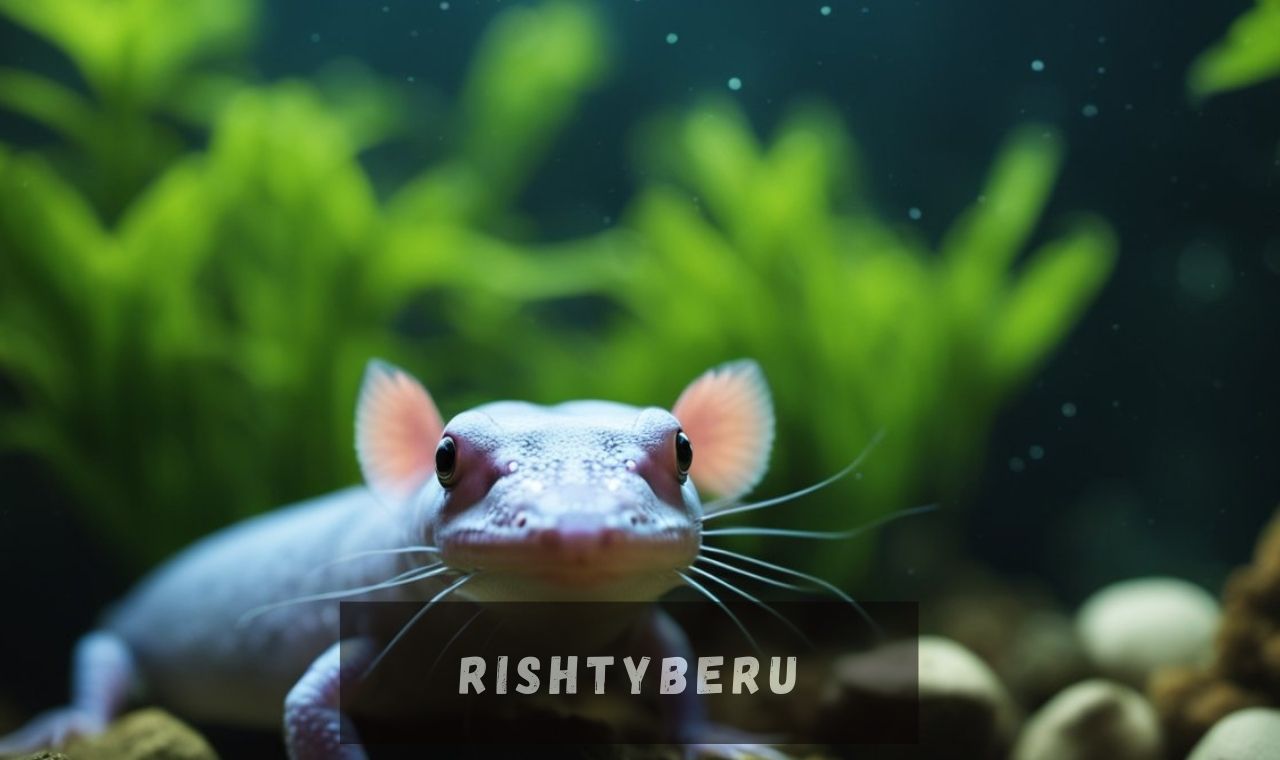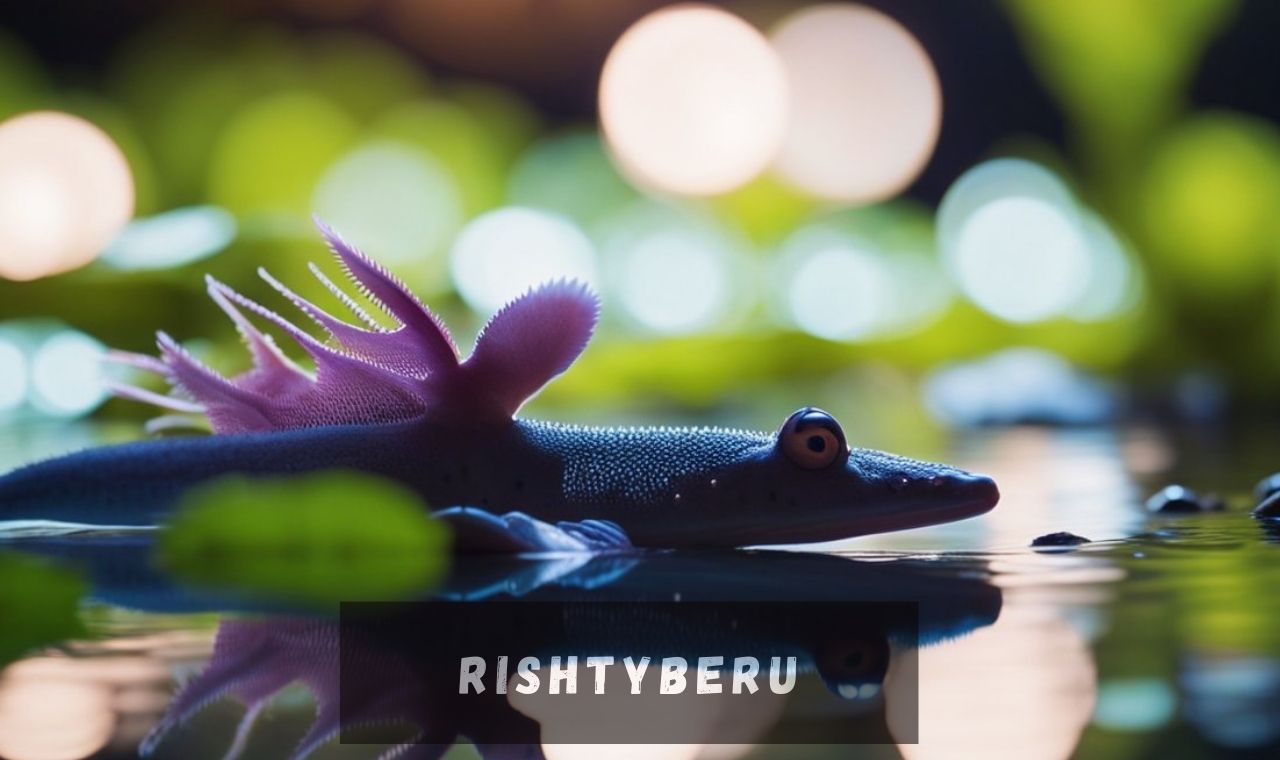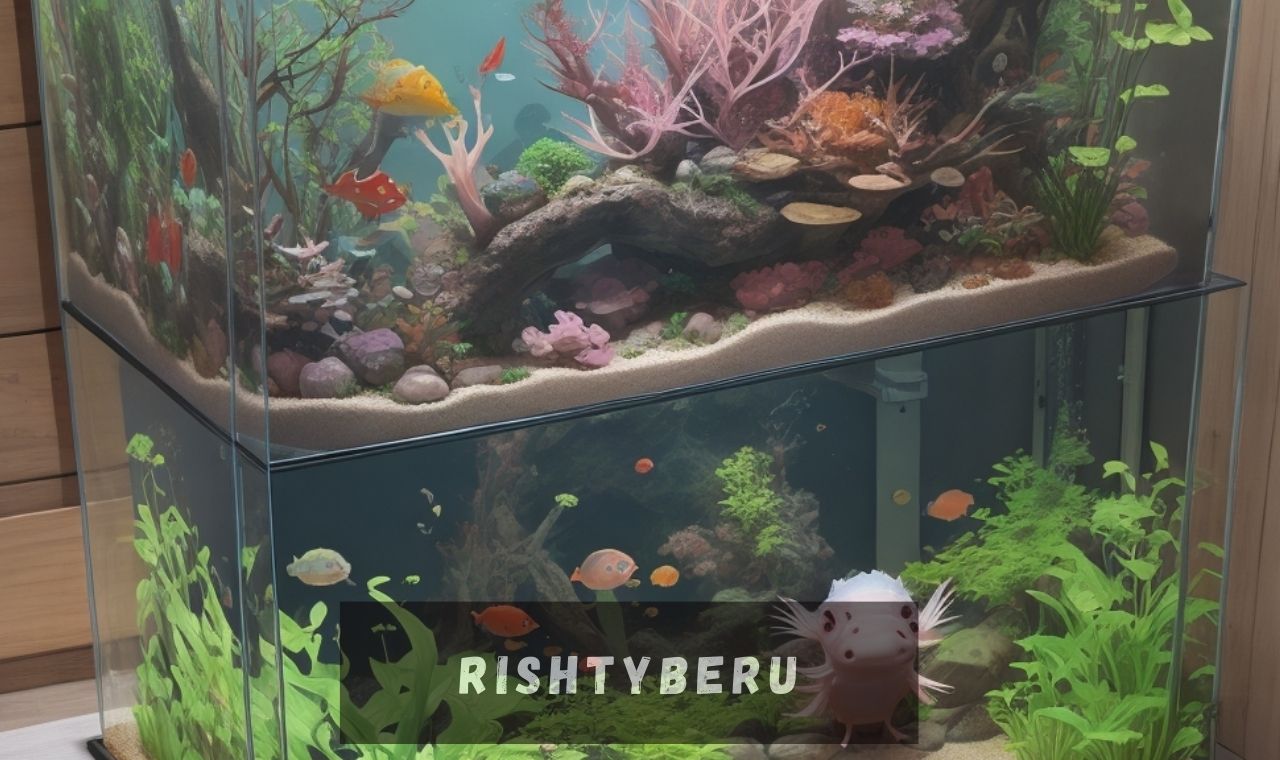Embarking on our journey into the mysterious realm of axolotls, we encounter numerous intriguing facets of their existence that beckon understanding. Central to this enigma lies their sleep behaviors. Let’s delve deeper into the essence of sleep for axolotls and the indicators that guide us in recognizing it.
Decoding Sleep for Axolotls
Understanding the sleep habits of axolotls remains a puzzle, primarily because defining sleep for these aquatic beings is an ongoing area of research. Unlike humans, axolotls lack eyelids that close during sleep, nor do they exhibit the conventional signs of slumber. So, how do we determine if they are truly asleep?
Identifying Sleep Signs in Axolotls
Through observation, several telltale signs indicate sleep in these captivating creatures. Often, they seek out a tranquil spot and remain motionless, with their fringed gills relaxed alongside their bodies, reflecting a serene state akin to sleep. Their nocturnal activity may diminish, with noticeably reduced swimming or hunting as they adopt a relaxed posture at the tank bottom, resembling sleep.
Distinguishing Resting from Sleeping in Aquatic Species
It’s vital to differentiate between resting and sleeping in aquatic species, particularly in axolotls. Resting typically involves settling at the tank bottom while calmly surveying their surroundings. Conversely, during sleep, axolotls appear completely at ease, exhibiting decreased responsiveness to their environment.
Furthermore, the axolotl’s sleeping environment significantly impacts their rest. A well-maintained tank, with appropriate lighting and temperature conditions, plays a pivotal role in ensuring the axolotl obtains its necessary rest.
Do Axolotls Sleep at Night? Are They Nocturnal?
In the realm of aquatic pets, axolotls stand out as uniquely captivating creatures. Naturally, their intricate sleep-wake patterns arouse curiosity among enthusiasts. One pressing question arises: do axolotls sleep at night, and are they nocturnal? This section aims to dispel uncertainties surrounding these queries.
Contrary to popular belief, axolotls’ sleep-wake cycles aren’t strictly tied to conventional day and night rhythms as observed in many other animals. While initial observations might suggest axolotls are nocturnal, this isn’t entirely accurate. Rather, they exhibit crepuscular behavior, predominantly active during dawn and dusk twilight hours.
An expert in axolotl behavior elaborates, “Axolotls primarily thrive during the twilight periods of dawn and dusk, resting or displaying reduced activity during daylight peaks and darkest nighttime hours.”
These crepuscular tendencies stem from axolotls’ natural habitat in the Xochimilco lake system near Mexico City, where twilight activity offers enhanced predator protection.
However, individual axolotls may display variations in activity patterns influenced by factors such as environmental conditions, age, and health status.
Environmental Conditions: Alterations in light, temperature, and noise levels can impact axolotls’ sleep and wake cycles. For instance, exposure to constant light may disrupt their sleep schedules. Age: Young axolotls tend to sleep more than adults, resting at various times throughout the day and night. Health: Illness or stress may prompt axolotls to sleep more, disrupting their usual rest patterns. While axolotls lean toward crepuscular behavior rather than strict nocturnality, it’s crucial to understand their natural habitat and individual traits when exploring their sleep patterns further.
The Science of Axolotl Nocturnal Behavior

In the enigmatic realm of the axolotl, the interplay between light and shadow unveils captivating revelations about their conduct. A meticulous examination of their nocturnal antics and their reaction to diverse luminous settings provides a gateway to comprehending their innate sleep patterns. Within the realm of axolotl slumber, a wealth of research offers a distinctive vantage point into their cyclical rhythms, edging us closer to unraveling the subtleties of their existence.
Nocturnal Revelations: A Peek into Axolotl Activity
Diving into studies spotlighting axolotl behavior after nightfall unveils a compelling narrative surrounding their tendencies. Detailed scrutiny suggests a penchant for nocturnal activity, bolstering the belief in their nocturnal inclinations. While our grasp of the axolotl’s sleep cycle remains incomplete, ongoing research paints a vivid panorama of their nighttime engagements, reflecting their penchant for the twilight hours.
Luminary Preferences: Navigating Light and Shadow
The axolotl’s response to luminous flux unveils insights into their predilections. Evolving research hints at a sensitivity to bright light, hinting at a proclivity for dimmer environs. However, it behooves us to interpret these findings with caution, recognizing the need for further scientific inquiry to definitively discern their luminous preferences.
Delving into Axolotl Slumber: An In-depth Analysis
Unraveling the mysteries of axolotl sleep cycles represents an ongoing odyssey. Through continued research, we aspire to unearth more about these captivating creatures, enriching our comprehension of their nocturnal conduct and slumbering habits.
Axolotl Slumber: An Elaborate Exploration
The sleep regimen of axolotls beckons a comprehensive examination. A rudimentary understanding thereof sheds light on their overall demeanor and welfare, aiding caretakers and enthusiasts in their stewardship of these mesmerizing amphibians. In particular, a nuanced analysis of axolotl sleep behaviors vis-à-vis other amphibians, alongside the influence of circadian rhythms, promises insights into their diurnal dynamics.
Comparative Insights: Axolotl Slumber vs. Fellow Amphibians
While sharing overarching traits with their amphibious kin, axolotl slumber harbors distinct idiosyncrasies. Scrutinizing these disparities and parallels affords a nuanced grasp of their unique sleep patterns, profoundly shaping their rest intervals and nocturnal engagements.
Circadian Cadence: The Pulse of Axolotl Slumber
The internal chronometers governing axolotl biology wield profound sway over their sleep habits. Individual variations therein manifest in distinct slumber periods and nocturnal pursuits, offering a window into their distinctive rhythms.
Illuminating Axolotl Slumber: The Role of Light
Amid inquiries surrounding axolotl care, a recurring question emerges: must axolotls plunge into darkness to slumber? Contrary to conventional wisdom, evidence suggests that these creatures might not necessitate total darkness for repose. However, while not imperative, an optimal luminous milieu augments their well-being, underlining the significance of balance and mimicry of their natural habitat.
Navigating the Twilight Realm: Crafting Optimal Conditions
In crafting an environment conducive to axolotl well-being, a nuanced approach to lighting emerges as paramount. While eschewing total darkness, fostering a dim-lit ambiance akin to dusk or dawn could nurture their slumber. Gradual transitions between light phases mimic nature’s cadence, contributing to their adaptability and overall health.
In Conclusion: Balancing Light and Shadow
In the realm of axolotl slumber, the quest for optimal luminous conditions assumes primacy. While not mandating absolute darkness, a harmonious interplay between light and shadow fosters their welfare. Striking this equilibrium honors their natural proclivities while accommodating their capacity for adaptation.
Nocturnal World of Axolotls
As the sun dips below the horizon and darkness envelops the surroundings, the nocturnal life of axolotls unfolds, revealing a captivating contrast to their daytime tranquility. Dive deep into the intriguing realm of axolotl nighttime activity, shedding light on the behaviors that define these remarkable creatures after dusk.
Observing Axolotl Behavior After Dark
Venturing into the realm of axolotl nocturnal behavior unveils a mesmerizing spectacle. With the cloak of darkness, axolotls embark on a journey of exploration, displaying a repertoire of behaviors distinctive to the night. From energetic swimming to frequent burrowing and an increased appetite, the transition from day to night illuminates the nocturnal tendencies ingrained within axolotls, unraveling yet another facet of their complex existence.
Unraveling Influential Factors
Numerous environmental and physiological factors shape axolotl nocturnal behavior. Foremost among these is the absence of light, drawing axolotls into the embrace of darkness, reminiscent of their amphibian kin. Temperature also plays a pivotal role, with cooler nights igniting heightened activity levels. Additionally, factors such as food availability and habitat safety intricately weave into the tapestry of nocturnal activities, further defining the after-dark adventures of axolotls.
Crafting the Perfect Sleeping Sanctuary
Nurturing axolotls entails crafting an environment tailored to their unique needs, including their sleep patterns. Central to this endeavor is the design of their habitat. Striking a balance between land and water space provides ample room for rest and play, complemented by vegetation to foster a serene ambiance conducive to sleep.
In terms of lighting, a subdued atmosphere mimics their natural habitat, steering clear of harsh, direct illumination. Smooth, tranquil waters devoid of disruptive currents, coupled with a cooler tank temperature, set the stage for undisturbed slumber. Quiet surroundings further enhance the sleeping environment, ensuring axolotls enjoy the rejuvenating rest essential for their well-being.
Comparative Insights: Axolotls in the Aquatic Realm
Drawing parallels with other aquatic denizens unveils intriguing distinctions in sleep habits. Unlike fish, which maintain partial wakefulness, axolotls embrace full rest, rendering them more vulnerable during sleep. Conversely, similarities with aquatic reptiles highlight shared evolutionary threads, underscoring the diverse tapestry of aquatic sleep patterns.
Harnessing Research for Enhanced Care
Recent studies have illuminated previously unseen facets of axolotl sleep, painting a nuanced picture of their nocturnal rhythms. By aligning husbandry practices with these insights, caretakers can cultivate an environment that nurtures axolotls’ natural sleep cycles, fostering their vitality and longevity.
In essence, delving into axolotl nighttime activity offers a gateway to understanding these enigmatic creatures, enriching our stewardship and deepening our appreciation for the marvels of the aquatic world.
Investigating the Sleep Habits of Axolotls
After a comprehensive examination of axolotl sleep behaviors, we have reached the heart of our discoveries. These extraordinary amphibians offer a captivating glimpse into aquatic sleep patterns, with their nocturnal tendencies and unique sleeping habits taking center stage. The knowledge gained from this exploration not only enriches our understanding of axolotls but also plays a crucial role in enhancing their welfare and care in captivity.
Key Observations on Axolotl Sleep Patterns
The question of whether axolotls are strictly nocturnal or engage in daytime sleep cycles lies at the core of their sleep patterns. Despite their clear nocturnal behavior, their activity during daylight hours hints at a flexibility in their sleep routines, challenging the notion of them being solely nighttime sleepers. It appears that axolotls are greatly influenced by their surroundings, particularly by light conditions, which significantly impact their sleep behaviors.
Implications for Axolotl Care and Wellbeing
Understanding the sleep cycle of axolotls is essential for their owners, as it directly influences their care and welfare. This knowledge empowers individuals to create optimal living conditions that mimic the natural habitat of axolotls, thereby promoting their health and longevity. By providing an environment conducive to proper rest and nighttime activity based on their sleep patterns, the quality of life for these captivating creatures can be significantly improved.
Frequently Asked Questions (FAQs)
Do Axolotls Sleep at Night?
Yes, axolotls do sleep at night. While most of their rest occurs during the day, they also engage in intermittent sleep throughout the night. They exhibit crepuscular behavior, being most active during dawn and dusk.
Are Axolotls Nocturnal Creatures?
Although axolotls are most active during twilight hours, they are not strictly nocturnal; their behavior is termed crepuscular. During the night, they may be active but also spend time resting or sleeping.
How Can I Tell If My Axolotl Is Sleeping?
Axolotls do not close their eyes or show obvious signs of sleep like many other animals. However, you can identify sleep periods by their lack of movement and stationary position in the water. Additionally, their gill movement decreases when they are resting or sleeping.
Do Axolotls Need Darkness to Sleep?
Axolotls do not require complete darkness to sleep, but they prefer dimmer conditions for rest. Bright lighting can stress them and disrupt their sleep cycle. Thus, providing a dimly-lit environment can support their sleep and overall well-being.
How Can I Support My Axolotl’s Sleep Cycle?
Creating an ideal sleep environment involves managing lighting and offering hiding spots for sleep. Maintaining a regular feeding schedule can also help regulate their circadian rhythms and sleep patterns.
How Does Axolotl Sleep Compare to Other Aquatic Creatures?
Like axolotls, many aquatic creatures do not close their eyes while sleeping and may remain motionless. However, sleep patterns vary among species. Understanding these differences aids in caring for axolotls effectively.
What Is Current Research Saying About Axolotl Sleep Cycles?
Current research is shedding light on axolotl sleep patterns, although this area is still being explored. Studies suggest they follow a crepuscular sleep cycle, being most active at dawn and dusk but also sleeping intermittently throughout the day and night. Such insights contribute to a deeper understanding of axolotl behavior and well-being.



